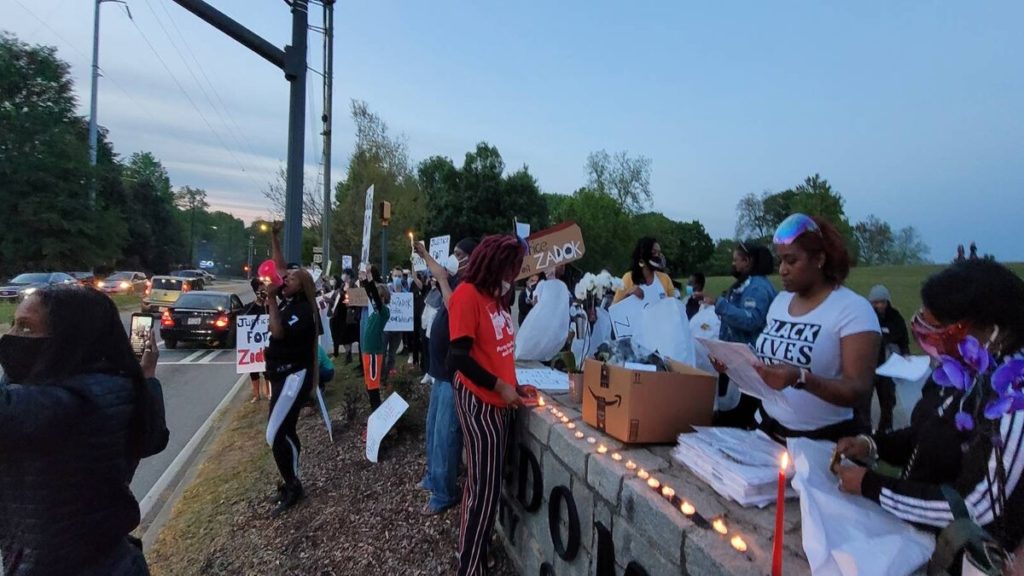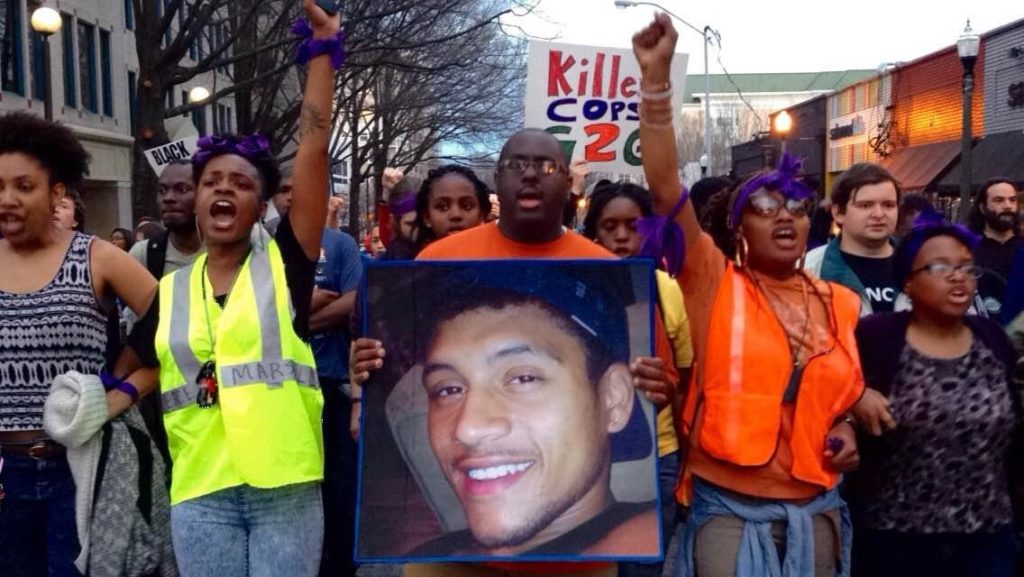On April 12, Dekalb County (east of metro Atlanta) police shot into the home of Matthew Zadok Williams while he was behind closed doors, hiding behind an ottoman. The police left him to bleed to death inside his own home. In the aftermath, a doctor stated that Williams’ life could have been saved had the police administered medical aid.
A neighbor called the police on April 12 saying a man with a knife had broken into an abandoned home. The police arrived onsite around 4 p.m. under the impression that Williams was homeless. The family later indicated that Williams owned the home and had lived there for 15 years.
Williams, who was having a mental health episode and needed a mental health professional, was instead met by armed police. At one point, Williams lunged at the police with a knife and the police retaliated by shooting. Williams escaped into his home and hid behind the ottoman. The police simply shot into his home.
The Williams family, distrustful of the initial autopsy results, hired their own physician. “There wasn’t a lot of blood clot, so that gave me the impression that he was not quite dead, and could have been salvageable in my opinion,” said Dr. Jackson Gates.
The media has tried to blame Williams for his own death with misleading headlines stating that he was killed after lunging at police with a knife. However, what the headlines are leaving out is that the shots that killed him occurred while he presented no threat to police. It should be noted that the Dekalb Police Department has released only a segment of the body camera footage.
On April 23, a public candlelight vigil was held for Matthew Zadok Williams at Freedom Park in Atlanta. Local activists and members of the family gathered to demand Justice. Among the crowd were signs with statements such as “Justice for Zadok” and “Release the full tapes.”

Music was played, candles were lit, and lanterns were released into the night sky. Zadok’s family spoke at the vigil. One of his sisters stated: “I’m going to ask you guys to not give up on our brother. Continue to fight with us until we get the justice he deserves.”
On a GoFundMe fundraiser page, the family describes Williams as an “avid reader. An activist. A humanitarian. A pacifist. He was full of life and love so exuberant that he radiated.” They added: “No one deserves to be killed like this. It must stop. We deserve to be safe in our own homes.”
Long pattern of police killing people during mental health crises
The story of Matthew Zadok Williams must be placed in the larger context of police brutality against those experiencing mental health crises.
On Sept. 16, 2017, the Georgia Institute of Technology Police Department responded to a call about a student with a knife. When police arrived at the scene, they encountered Scout Schultz holding a multi-tool. Schultz, who used they/them pronouns, asked the police to shoot them. A bystander captured the incident on video, in which you could hear an officer demanding that Schultz drop the knife.
Though Schultz never charged the police, Officer Tyler Beck shot Schultz in the chest and ultimately killed them. No de-escalation techniques were used.
The community’s response after the shooting was immediate. Huge protests erupted; multiple local activists were arrested. But after an investigation by the Georgia Bureau of Investigation, the GBI announced in March 2020 that Officer Beck would not face any charges. Schultz was the president of Georgia Tech’s Pride Alliance. Their death sparked widespread conversations on the intersection of LGBTQ oppression, mental health and police brutality.
Only a couple of years before the Scout Schultz shooting, a Dekalb County police officer shot another Black man facing a mental health crisis. On March 9, 2015, police had responded to a caller who said that a man was “acting deranged, knocking on doors, and crawling on the ground naked.” The victim was Anthony Hill, who was 26 years old at the time of his death.
An Afghanistan war veteran, Hill suffered from post-traumatic stress disorder and had been diagnosed with bipolar disorder two years before his death. His mother reported that he had recently stopped taking his medication. On the day of the shooting, bystanders reported that he had been running around his apartment complex naked, asking neighbors for his medicine, and crawling on the ground.
When Officer Robert Olsen arrived at the scene, he waited for backup but exited the car when Hill started approaching his car. Officer Olsen ordered Hill to stop but when he failed to comply, Officer Olsen shot him twice.
When Chief of Police Cedric Alexander arrived, Officer Olsen did not take long to start blaming the victim, claiming that “Hill was pounding on him” right before he shot him. This contradicts the witnesses’ stories that Hill had been more than six feet away from Officer Olsen when he was shot. Another officer on the scene also looked for a weapon the victim may have been holding, but came up with nothing.

Despite having been trained in de-escalation techniques and carrying a taser, baton, and pepper spray at the time of the shooting, Olsen chose the deadliest weapon and ultimately took a man’s life. Mass outrage at this egregious crime led to the first time a police officer was charged with a crime in Georgia in 6 years. The cop however was only convicted of aggravated assault, not murder.
The demand to defund the police
In recent years, 911 has become the only option for people looking for mental health crisis intervention. The New York City Police Department has reported that they respond to more than 400 mental health calls per day, averaging more than 12,000 per month. Police encounters with people suffering mental illness typically do not end well.
Recent studies have found that 25 to 50 percent of people who are shot and killed by police officers in the U.S. suffer from mental illness. The Treatment Advocacy Center states that people with untreated mental illness are 16 times more likely to be killed during a police encounter than other civilians approached by law enforcement. This number is even higher if the victim is also a person of a color and/or identifies as LGBTQ.
With the rise of the nationwide movement against police terror, “Defund the Police” has become a popular demand among working-class people. The tragedies of Zadok Williams, Scout Schultz, Anthony Hill, and countless others serve as examples for the urgent need to divert resources away from the police to social services.
Ignoring this mass demand, President Biden and Atlanta Mayor Keisha Lance Bottoms have proposed to increase the money being funneled into the police.
The urgency for fundamental change is understood by the communities impacted by this violence. As one of the speakers stated at the vigil for Williams: “We have a problem with the police but it’s bigger than that. We have a problem with the system. I don’t believe that the system can be changed, so something completely different has to be done so our people stop dying.”




